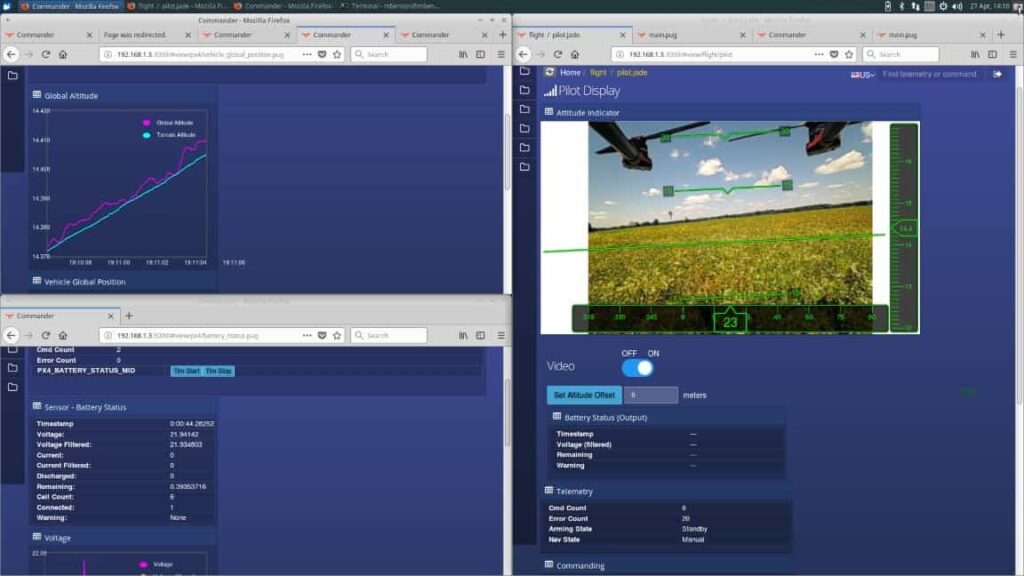Windhover Labs has announced the successful test flight of its integrated flight software stack and ground control software for unmanned aerial vehicles (UAVs). Built on the backbone of NASA’s Core Flight System (cFS) framework and to the standards commensurate with FAA certification, Windhover’s command, control, communication, and information systems are aimed at advancing the drone market into safe and reliable Beyond Visual Line of Sight (BVLoS) operations.
The successful test flight marked a significant milestone of Windhover’s Phase II NASA Small Business Innovation Research (SBIR) program. SBIR programs fund the research, development, and demonstration of innovative technologies that have significant potential for successful commercialization. As an open ecosystem, Windhover’s aftermarket extensibility options can create unlimited applications similar to the way iOS and Android users benefit from millions of independently designed and produced productivity tools.
“Windhover Labs is building upon the safety and reliability of NASA’s core Flight System for the drone universe,” said Michael Lowry of the Intelligent Systems Division at NASA Ames. “NASA’s cFS is a proven and expandable software foundation for space missions, which can also provide an expandable software solution for Unmanned Aircraft Systems.”
Windhover’s software ecosystem will help develop the potential of commercial applications for autonomous Unmanned Aircraft Systems (UAS). The ecosystem is designed for three main purposes: 1) to be integrated into drone hardware, 2) used for limitless commercial applications such as package delivery, precision agriculture, energy infrastructure inspection, and 3) a platform enabling drone service providers to build their own applications quickly and easily.
“Our team has over 30 years developing human rated space flight software for NASA, NASA subcontractors, and commercial space,” said Mathew Benson, Co-Founder and Chief Engineer at Windhover Labs. “We decided to apply our experience to the emerging commercial drone market and built our flight stack on proven, safety critical space flight software.”
Windhover’s software is designed for flying drones beyond line of sight, a similar scenario to operating spacecraft. Leveraging space flight software concepts of autonomy and safety as a foundation is key to the safe expansion and integration of small UAS into low-altitude airspace. Further, its ground software is built on standard IT solutions including HTML and JavaScript, making extensibility and workforce adoptions easy.
Additionally, the Windhover framework and autopilot are based on open source solutions making adoption by avionics industry a low cost option without sacrificing safety and reliability.
The Windhover Labs team has over 30 years of experience in human space flight software development, integration and test. In less than one year, the team built the platform from the ground up following a standards-based development process, culminating in a successful flying vehicle. Windhover Labs is currently working with NASA to promote the safe incorporation of Unmanned Aircraft Systems (UAS) into low-altitude airspace.



















